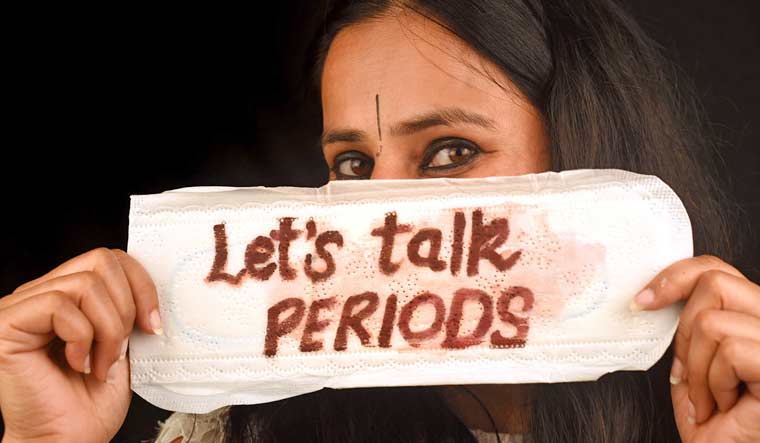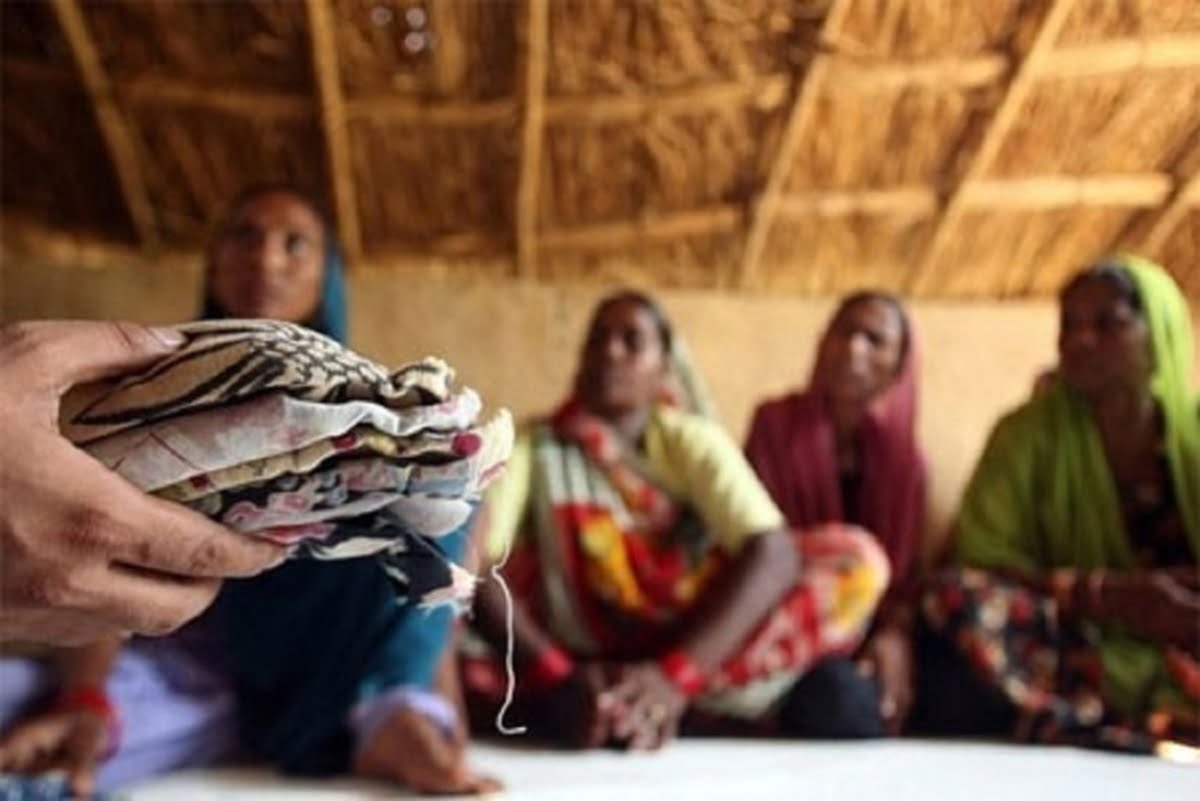The undressing of women in Bhuj in February 2020 to check if the women are menstruating (the “Bhuj Incident”) is one of the many examples of the utterly horrifying and dehumanising practices faced by menstruating women. There have been various instances, where women have been made to suffer due to menstruation, from being forced to skip school to sleeping in adjoining sheds to getting their uterus removed for increasing productivity, the discrimination is manifested in different forms and can range anywhere from inconvenience to death. Swatija and Radhika, in their article titled Menstrual Justice: A Missing Element in India’s Health Policies note “in practice, women physically and psychosocially experience the health effects of having their bodies marked as ‘impure’ well before the bleeding begins and well after it ceases. Thus, we propose a non-reductionist approach to women’s health that goes beyond the narrow confines of fertility and menstrual health: menstrual justice in health.”.
The taboos surrounding menstruation have been so internalised, that many women voluntary partake in exclusionary practices. However, one common theme which is maintained is that women are designated as “polluted” or “impure” for a bodily function which is natural and inevitable.
The taboos surrounding menstruation have been so internalised, that many women voluntary partake in exclusionary practices. However, one common theme which is maintained is that women are designated as “polluted” or “impure” for a bodily function which is natural and inevitable.

Also read: Period Poverty Endangers Women’s Right To Dignity
This leads us to question where did the belief that women are “impure” during menstruation originate in the first place? This is where the myth of Indra slaying Vritra in Rig Veda renders us assistance. It is said that Indra, after murdering a demon Vritra (and also a learned brahmin), was consumed by guilt, and ran to the women for protection and requested them to take the third part of his guilt. And it is the guilt of murder of Vritra appears every month as menstrual flow. According to Janet Chawla, author of Mythic Origins of Menstrual Taboo in Rig Veda, we also find evidence of exclusionary practices and restrictions on menstruating women linked to Indra’s slaying of Vritra.
In 2011, the Government launched the menstrual hygiene scheme (MHS) under the Ministry of Health and Family Welfare for promotion of menstrual hygiene among adolescent girls between the ages of 10-19. Under the MHS scheme, sanitary napkins called “Freedays” are provided to rural adolescent girls for six rupees. Apart from the above, Kishori Shakti Yojana, Scheme for Adolescent Girls (SABLA), Sarva Siksha Abhiyan, Rashtriya Madhyamik Siksha Abhiyan, Swach Bharat: Swach Vidyalaya, National Rural Livelihood Mission, Pradhan Mantri Bhartiya Janaushadhi Pariyojana, Swachh Bharat Mission and Guidelines on Menstrual Hygiene Management aim to promote menstrual hygiene and production of affordable sanitary napkins.
However, despite the plethora of schemes listed above, according to the latest National Family Health Survey (NFHS-5), the percentage of rural women between the ages of 15-24 who do not have access to hygienic methods of protection during their menstruation (i.e locally prepared napkins, sanitary napkins, tampons, and menstrual cups) ranges from an abysmal 56% to 100% (showing the extent of period poverty in the country), whereas for urban women the percentage ranges from to 74.7% to 98.5%. Further, according to NFHS-4, more than 60% women in the above age group use old cloth for menstrual protection.

While on one hand the government has introduced various schemes to tackle the myths associated with menstruation, on the other hand it itself partakes in social exclusion of women, case in point being exclusion of women from the Sabarimala temple. In the Sabarimala judgment, Justice DY Chandrachud was the only judge out of the 5 judges bench, who effectively dealt with the argument that the exclusion of women was a form of untouchability prohibited under Article 17 of the Constitution. The argument raised was that Article 17 is confined to caste and religion based untouchability, with respect to which the above Judge noted “The third significant feature is that the practice of untouchability” is forbidden “in any form”. The “in any form” prescription has a profound significance in indicating the nature and width of the prohibition. Every manifestation of untouchability without exception lies within the fold of the prohibition”. He further noted “Prejudice against women based on notions of impurity and pollution associated with menstruation is a symbol of exclusion. The social exclusion of women, based on menstrual status, is but a form of untouchability which is an anathema to constitutional values.”
Also read: Why Are We Missing Out In Addressing Period Poverty?

In an order passed in J&K HC, the said HC was concerned with the difficulties faced by adolescent girlsfrom poor backgrounds between the ages of 11 to 18 years in receiving education on account of lack of access to education due to menstruation and menstrual hygiene. The HC noted “Poor awareness of the physiology, unscientific attitudes, myths, and misconceptions including the notion that menstruating women are “contaminated,‟ “dirty” and “impure‟ adversely affect their health and social lives. This has included exclusion from places of work, worship and the home, with a rigid hygiene centric routine aimed to prevent “pollution‟ of spaces which menstruating women may access.” In the said case, the HC directed the government to submit a report containing inter alia (i) steps taken for implementation of government schemes; (ii) availability of affordable menstrual hygiene products to all adolescent girls; and (iii) action plan for sensitisation and education on the subject of menstruation and menstrual hygiene.
In the PIL filed with respect to the Bhuj Incident, the petitioners inter alia argued for a specific law addressing the abolition of untouchability citing that the Bhuj Incident, is only an indicator of a widespread problem. The Gujarat HC, in the said PIL, proposed to issue directions to the government to inter alia: (i) prohibit social exclusion of women based on their menstrual status at all private and public places, including religious and educational; and (ii) include the issue of social exclusion of women on the basis of their menstrual status in all existing campaigns/schemes of the state government that aims at menstrual hygiene. It is important to note that the court used the word “proposed” and said that it is dealing with a “delicate” issue and hence the above propositions are prima facie in nature.
In the words of Swatija and Radhika, “the Indian state’s health policies fail women because they do not recognize that the marking of women as impure menstruating bodies is a cause of women’s health inequity from birth to death. This very denial by the state policy of women’s gendered experience of health is menstrual injustice”.
However, the sensitivity displayed by the courts above does not extend to all courts of India. In a petition filed before Delhi HC, requesting grant of four days paid leave every month to all class of women employees and overtime allowance if they opt to work during the menstruation period, the Delhi HC directed the concerned authorities to treat the petition as a representation and directed the authorities to take decisions according to the law.
In the words of Swatija and Radhika, “the Indian state’s health policies fail women because they do not recognize that the marking of women as impure menstruating bodies is a cause of women’s health inequity from birth to death. This very denial by the state policy of women’s gendered experience of health is menstrual injustice”. In most instances, the judiciary has shown its willingness to view menstruation through a dignified and humanising lens, however, the judiciary cannot discharge the functions of legislature and executive. The three branches of the government need to come together to show that it is really committed to the cause of menstrual justice.
Note: The article does not intend to dismiss menstruation experience of transgenders and non-binary people, however, keeping in mind that all the reports and judgments cited concern women, the term women instead of menstruators has been used.
Pooja is a lawyer. She is currently trying to find a job that she does not hate. When not overthinking about capitalism, her aging parents, and stray dogs, she enjoys reading anything and everything. She can be found on Instagram and LinkedIn.
Featured image source: Outlook India




